 |
|
Nagoya Airfield
名古屋飛行場
Nagoya Hikōjō |
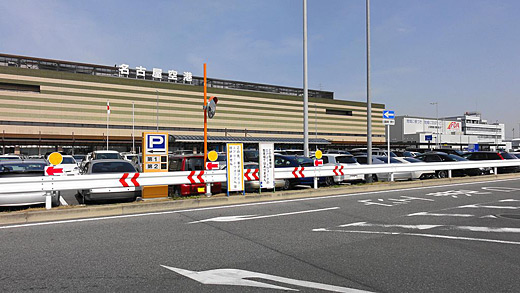
IATA: NKM – ICAO: RJNA
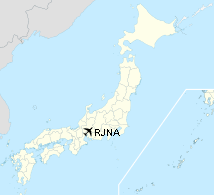
|
| Summary |
| Airport type |
Public |
| Location |
Komaki |
| Elevation AMSL |
46 ft / 14 m |
| Coordinates |
35°15′18″N 136°55′28″E / 35.255°N 136.92444°E / 35.255; 136.92444 (Nagoya Airfield)Coordinates: 35°15′18″N 136°55′28″E / 35.255°N 136.92444°E / 35.255; 136.92444 (Nagoya Airfield) |
| Runways |
| Direction |
Length |
Surface |
| m |
ft |
| 16/34 |
2,740 |
8,990 |
Asphalt concrete |
| Source: Japanese AIP at AIS Japan |
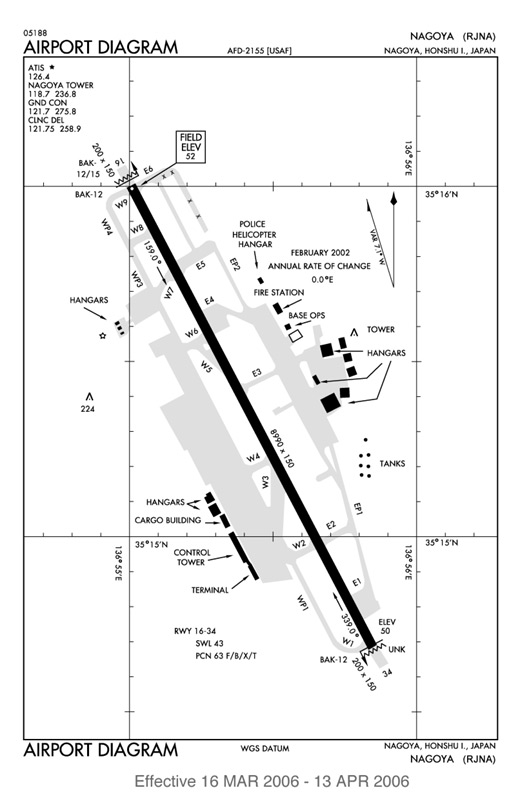
Airport Diagram
Click to enlarge
Nagoya Airfield (名古屋飛行場, Nagoya Hikōjō) is an airport which lies within the local government areas of Toyoyama, Komaki, Kasugai and Nagoya in Aichi Prefecture, Japan. It was an international airport but is now a domestic secondary airport serving Nagoya. (The current primary civil airport for Nagoya is Chūbu Centrair International Airport in Tokoname.)
It is the main hub for J-Air, the only airline that offers scheduled transport service from the airfield. It is also used for general aviation and as an airbase. Alternate names
- "Nagoya Airfield" is the name as the Ministry of Land, Infrastructure and Transport of the national government, as of 2008, recognises it as an "other airport".
- The airfield was Nagoya Airport (名古屋空港, Nagoya Kūkō) until the opening of Centrair on February 17, 2005.
- It has been conventionally called Komaki Airport (小牧空港, Komaki Kūkō).
- Aichi Prefectural Government, the current owner of the airport nicknames it Prefectural Nagoya Airport (県営名古屋空港, Ken-ei Nagoya Kūkō).
- The Japan Self-Defense Forces shares the runway as a part of Japan Air Self-Defence Force Komaki Base (航空自衛隊小牧基地, Kōkū Jiei-tai Komaki Kichi). The Boeing KC-767 tanker is based there.
Airlines and destinations
Domestic
| Airlines |
Destinations |
| Fuji Dream Airlines |
Fukuoka [begins 31 October] |
| Japan Airlines operated by J-AIR |
Akita [ends 28 February], Fukuoka [ends 30 October], Kochi [ends 26 March], Kumamoto [ends 26 March], Matsuyama [ends 28 February], Nagasaki [ends 30 October], Niigata [ends 26 March], Obihiro [ends 30 October], Yamagata [ends 30 October] |
History
Nagoya Airport served as the main airport for Nagoya until the opening of Chubu Centrair International Airport on February 17, 2005. This airport IATA Airport Code used to be NGO (now overtaken by the new Centrair airport), and its ICAO Airport Code used to be RJNN when it was classified as a second class airport; the new designations are NKM for regional flights and RJNA designation for general aviation flights. Aichi Prefecture manages the facilities and regularly handles international business flights.
Nagoya Airport was actually opened in 1944 as a military airport. During the 1980s and early 1990s, Nagoya Airport was a busy international airport because of overflow from Japan's other international airports, New Tokyo International Airport (now Narita International Airport) near Tokyo and Osaka International Airport (Itami Airport) near Osaka. Since the opening of Kansai International Airport in 1994, the airport's main traffic source has been the nearby automotive and manufacturing industries, causing carriers such as United Airlines and Delta Air Lines(Portland (OR)) to stop flying to Nagoya (Delta currently serves Centrair Airport with flights to Detroit, Guam, Manila, and Saipan). Some discount holiday flights still operated from Nagoya, drawing passengers from the Kansai region. On the other hand, the cargo handling capacity of Nagoya Airport was not enough to satisfy the demands from the regional economy and air cargo shifted to Narita and Kansai. In addition, the airport was hampered by its location in a residential area of Aichi Prefecture, limiting the number of flights that can use the airport, as well as the hours in which they can fly.
Because of these reasons, a new airport, Chubu Centrair International Airport, was built on an island south of Nagoya. On February 17, 2005, nearly all of Nagoya Airport's commercial transport flights moved to Centrair. On the same day, the old airport became a general aviation and airbase facility, as well as was renamed to the current names and accepting J-AIR's headquarters and hub relocation from Hiroshima-Nishi Airport. A dedicated business aviation terminal and commuter flights within Japan then became the key features of Nagoya's secondary airport.
Incidents and accidents
- On April 18, 1993, Japan Air System Flight 451, a Douglas DC-9-41 of Japan Air System flying from Nagoya to Hanamaki, crashed after the aircraft, caught by windshear, skidded off of the runway while landing at Hanamaki Airport. All of the passengers and crew survived.
- On April 26, 1994, an Airbus Airbus A300B4-622R jet operating as China Airlines Flight 140 (B-1816) from Taipei to Nagoya crashed onto the south-east corner of the airport apron whilst trying to land on Runway 34, killing 264 of the 271 people on board, making it the second deadliest crash on Japanese soil.
- On October 31, 2007, a Mitsubishi F-2 fighter jet, whilst on a test flight, crashed and exploded in flames during takeoff. Both pilots survived the incident with minor injuries.

Nagoya Airport
Click to enlarge
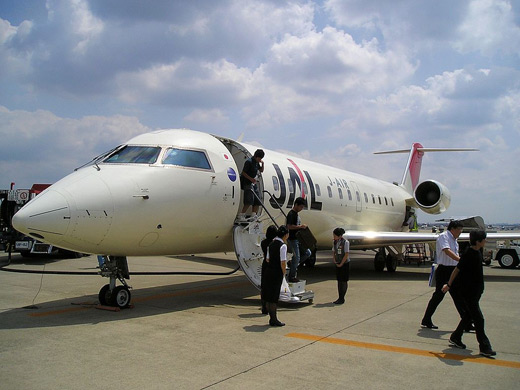
Nagoya Airport
Click to enlarge
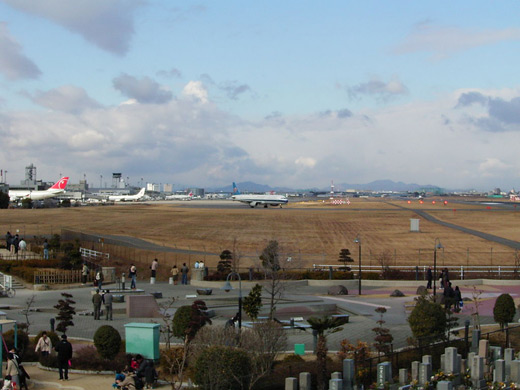
Nagoya Airport
Click to enlarge
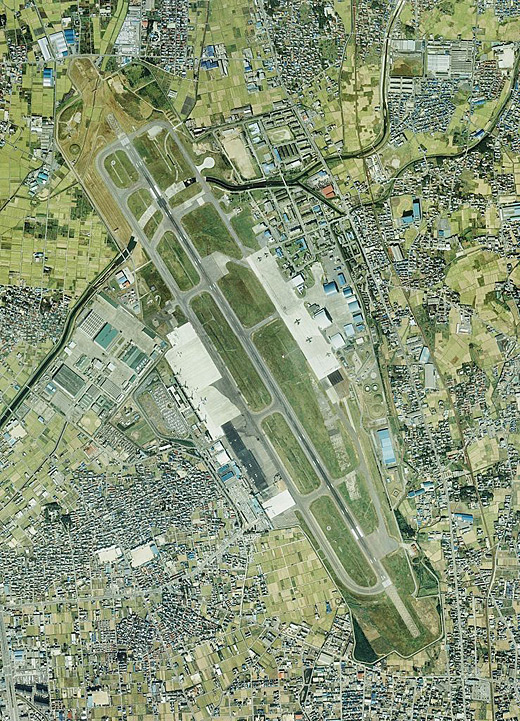
Nagoya Airport
Click to enlarge
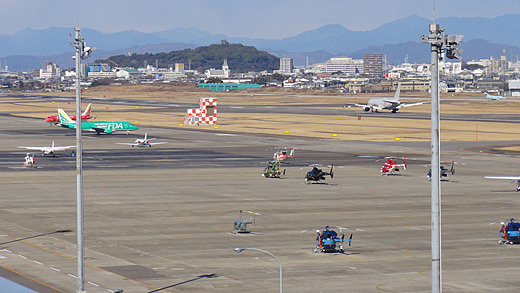
Nagoya Airport
Click to enlarge
The above content comes from Wikipedia and is published under free licenses – click here to read more.
| General Info
|
| Country |
Japan
|
| ICAO ID |
RJNA
|
| Time |
UTC+9
|
| Latitude |
35.255000
35° 15' 18.00" N
|
| Longitude |
136.924444
136° 55' 28.00" E
|
| Elevation |
52 feet
16 meters
|
| Type |
Joint (Civil and Military)
|
| Magnetic Variation |
007° W (01/06)
|
| Beacon |
Yes
|
| Operating Agency |
MILITARY - CIVIL JOINT USE AIRPORT
|
| Alternate Name |
KOMAKI AB
|
| Island Group |
Honshu I
|
| International Clearance Status |
Airport of Entry
|
| Communications
|
| TWR |
118.7
236.8
122.7
126.2
305.7
|
CENTRAIR TCA
2300-1200Z
|
119.25
321.2
121.75
318.0
|
| GND |
121.7
275.8
|
| CENTRAIR DEP |
121.225
227.2
|
| CLNC DEL |
121.75
258.9
|
| CENTRAIR APP |
121.05
228.4
119.75
245.3
|
| Runways
|
| ID |
Dimensions |
Surface |
PCN |
ILS
|
| 16/34 |
8990 x 150 feet
2740 x 46 meters |
ASPHALT |
063FBXT |
YES
|
| Navaids
|
| Type |
ID |
Name |
Channel |
Freq |
Distance From Field |
Bearing From Navaid
|
| VORTAC |
KCC |
NAGOYA |
089X |
114.2 |
At Field |
-
|
| NDB |
NG |
AICHI |
- |
397 |
7.6 NM |
332.3
|
| Supplies/Equipment
|
| Fuel |
100/130 MIL Spec, low lead, aviation gasoline (BLUE)
|
| Oil |
O-133, 1010, jet Engine Oil (MIL l 6081)
O-148, MIL L 7808 (Synthetic Base), Turboprop/Turboshaft Engine
O-156, MIL L 23699 (Synthetic Base)Turboprop/Turboshaft Engine
|
| Other Fluids |
LHOX, Low and high pressure oxygen servicing
LOX, Liquid oxygen servicing
|
| Remarks
|
| CSTMS/AG/IMG |
CSTMS avbl 2330-1230Z, AG avbl 2230-1330Z, IMG avbl 2300-1300Z.
|
| FLUID |
LHOX,LOX
|
| FUEL |
(NC-100, A1)
|
| JASU |
(C-2B) (C-3) (JEAS) (KM-3)
|
| LGT |
PAPI Rwy 16 MEHT 64', Rwy 34 - 67'. Thld lgt Rwy 16-34.
|
| NS ABTMT |
See FLIP PLANNING, AP/3.
|
| OIL |
O-133,148,156
|
| RSTD |
24 hr PPR for trns acft. Rwy clsd 1300-2100Z exc PPR acft due to const til late Feb 07.
|
The content above was published at Airports-Worldwide.com in 2010.
We don't guarantee the information is fresh and accurate. The data may be wrong or outdated.
For more up-to-date information please refer to other sources.
|
 |



